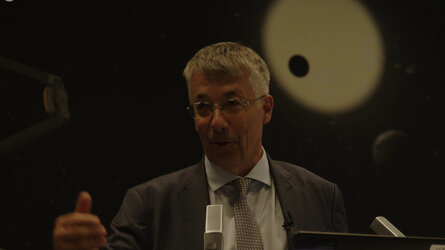
Hera planetary defence mission: solving asteroid mysteries
There’s a mystery out there in deep space – and solving it will make Earth safer. That’s why the European Space Agency’s Hera mission is taking shape – to go where one particular spacecraft has gone before.
On 26 September 2022, moving at 6.1 km/s, NASA’s DART spacecraft crashed into the Dimorphos asteroid. Part of our Solar System changed. The impact shrunk the orbit of the Great Pyramid-sized Dimorphos around its parent asteroid, the mountain-sized Didymos.
This grand experiment was performed to prove we could defend Earth against an incoming asteroid, by striking it with a spacecraft to deflect it. DART succeeded. But that still leaves many things scientists don’t know: What is the precise mass and makeup of Dimorphos? What did the impact do to the asteroid? How big is the crater left by DART’s collision? Or has Dimorphos completely cracked apart, to be held together only by its own weak gravity?
That’s why we’re going back – with ESA’s Hera mission. The spacecraft will revisit Dimorphos to gather vital close-up data about the deflected body, to turn DART’s grand-scale experiment into a well-understood and potentially repeatable planetary defence technique.
The mission will also perform the most detailed exploration yet of a binary asteroid system – although binaries make up 15% of all known asteroids, one has never been surveyed in detail.
Hera will also perform technology demonstration experiments, including the deployment ESA’s first deep space ‘CubeSats’ – shoebox-sized spacecraft to venture closer than the main mission then eventually land – and an ambitious test of 'self-driving' for the main spacecraft, based on vision-based navigation.
By the end of Hera’s observations, Dimorphos will become the best studied asteroid in history – which is vital, because if a body of this size ever struck Earth it could destroy a whole city. The dinosaurs had no defence against asteroids, because they never had a space agency. But – through Hera – we are teaching ourselves what we can do to reduce this hazard and make space safer.







